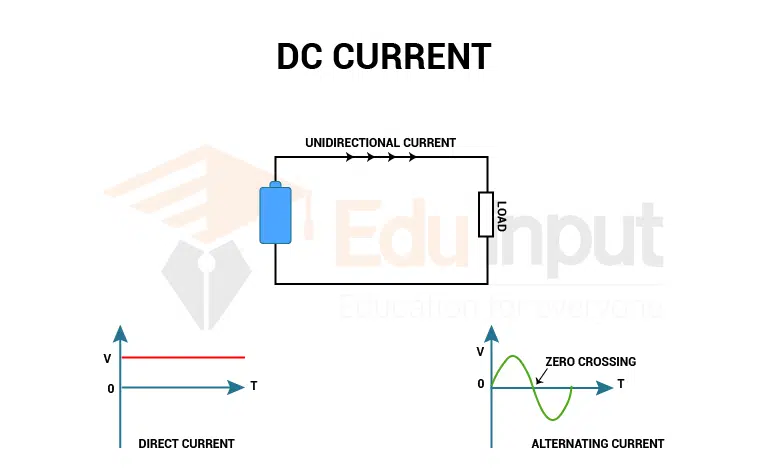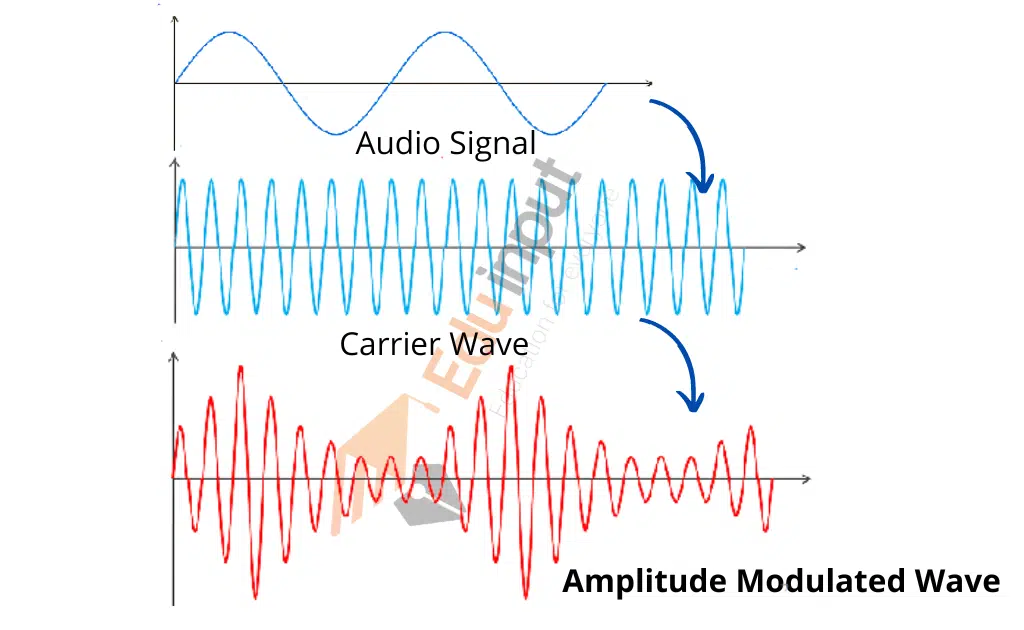Direct Current(DC)-Definition, Uses, And Circuit
The flow of charge is always in the same direction because a direct current is an electric current that is uni-directional. The direction and amperage of direct currents do not change when compared to alternating currents. It’s used in a lot of household electronic devices, and in all devices that use batteries.
Direct Current(DC)
The one-directional flow of electric charge is referred to as direct current. DC power is used in an example of an electrochemical cell. Direct current can flow through conductors such as a wire, but can also flow through transistors, insulators, and even through a vacuum as in electron or ion beams. The alternating current is different from the electric current in that it flows in a constant direction.

The abbreviations AC and DC are often used to mean simply alternating and direct, as when they modify current or voltages. Direct current can be converted into alternating current with the help of inverters.
Uses of Direct Current
Direct current can be used for a lot of things, from the charging of batteries to large power supplies for electronic systems. Smelting of aluminum and other electrochemical processes use large quantities of electrical energy provided via direct current. It is also used for railways, especially in urban areas.
Domestic and commercial buildings
DC can be found in many extra-low voltage applications and in some low-voltage applications, which are powered by batteries or solar power systems since both can produce only DC. The DC power supply is required for most electronic circuits. Domestic DC installations usually have different types of sockets, switches, and fixtures from those that are suitable for alternating current.
The higher currents result in the same amount of power because of the lower voltages used. Unless the device has a bridge to correct for this, it’s usually important with a DC appliance to observe the polarity. The standards of DC power distribution in hybrid houses and commercial buildings are being developed by the EMerge Alliance.
Automotive
Most automotive applications are powered by DC. Power for engine starting, lighting, the ignition system, climate controls, and the infotainment system can be obtained from an automotive battery. The AC device that produces DC for charging batteries is called the alternator. The majority of highway passenger vehicles have 12 V systems.
Heavy trucks, farm equipment, and earth-moving equipment with Diesel engines use 24volt systems. The original Volkswagen Beetle was one of the older vehicles that had 6 V in it. There was a time when a 42 V electrical system was considered for automobiles, but it didn’t use up much.
The metal frame of the vehicle is connected to a pole of the battery and used as the return conductor in a circuit in order to save weight and wire. The positive ground may be used in some wheeled or marine vehicles, but the negative pole is usually the connection. There are two separate DC systems for the battery electric vehicle.
The DC system in an internal combustion engine vehicle operates at 12V and serves the same purpose as the “low voltage” DC system. Increasing the voltage for the traction motors reduces the current flowing through them, increasing efficiency.
DC Circuit
A direct current circuit is an electrical circuit that consists of any combination of constant voltage sources, constant current sources, and resistors. In this case, the circuit voltages and currents are not dependent on time. The past value of any circuit voltage or current is not a determining factor for a particular circuit voltage or current.
This means that the system of equations that represent a DC circuit does not involve the use of integrals or derivatives. The resulting circuit is not a DC circuit if a Capacitor or inductor is added to it. The majority of such circuits have a solution for DC. When the circuit is in DC steady state, this solution will give the circuit voltages and currents.
A system of differential equations is used to represent such a circuit. The solution to these equations usually consists of a time-varying or Transient part as well as a constant or steady state part. The DC solution is comprised of this steady state part. There are some circuits that don’t have a solution for DC. Two simple examples are a constant current source connected to a Capacitor and a constant voltage source connected to an Inductor.
In electronics, it is common to refer to a circuit that is powered by a DC voltage source such as a battery or the output of a DC power supply as a DC circuit, even though what is meant is that the circuit is not DC-powered.







Leave a Reply